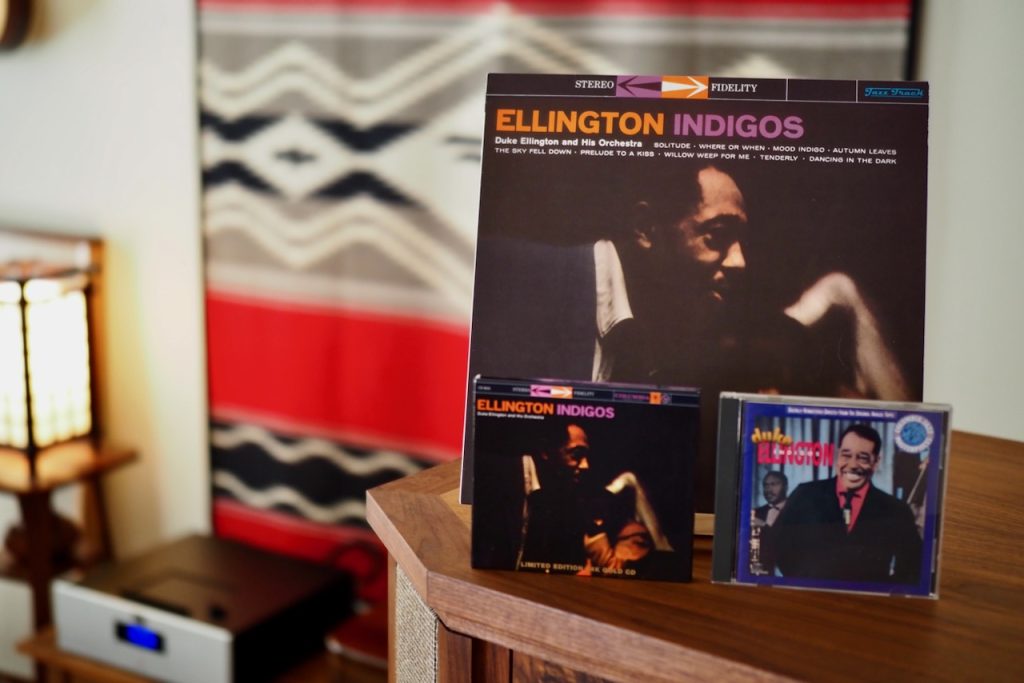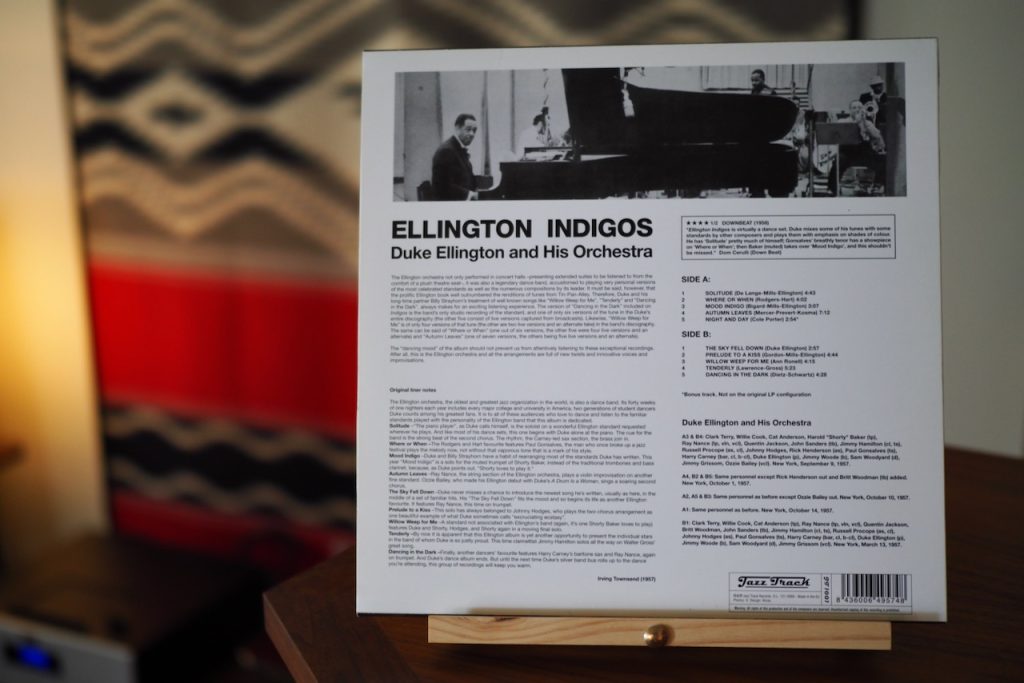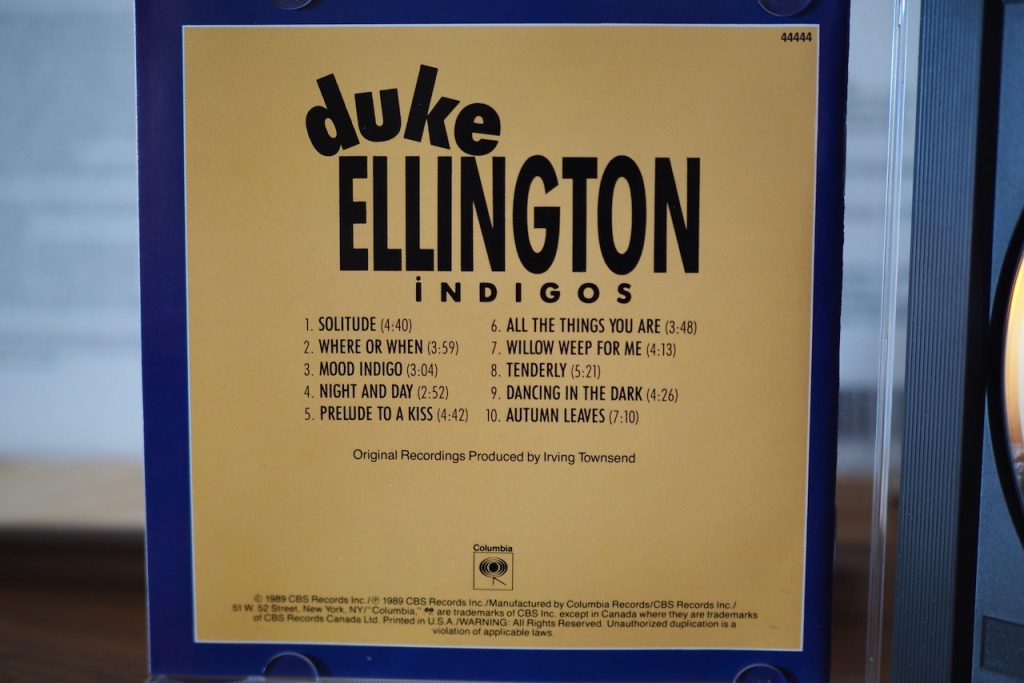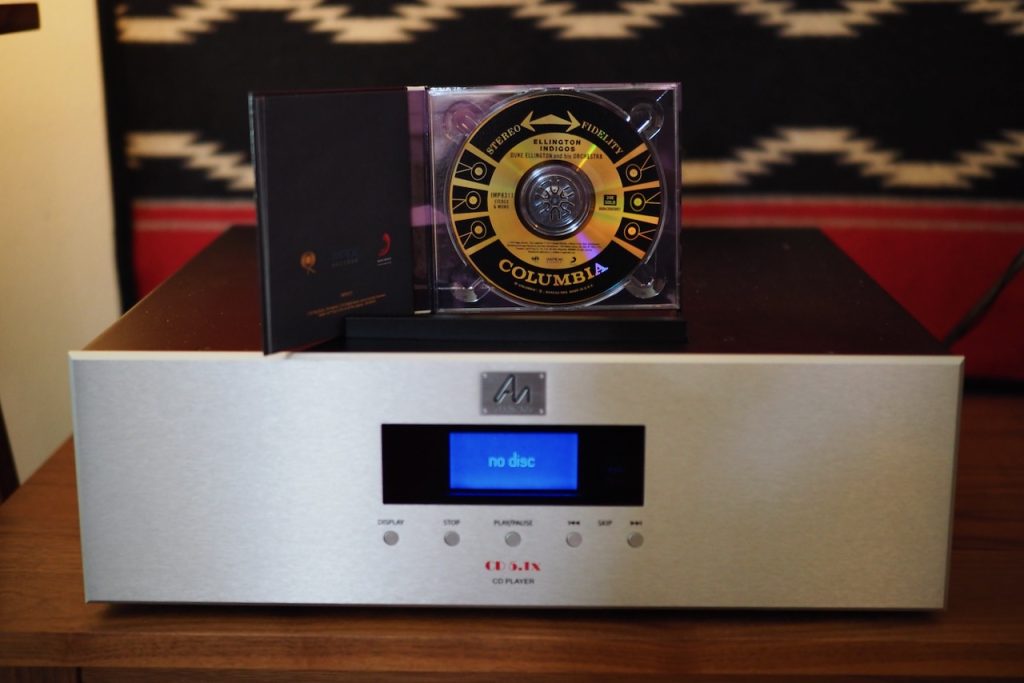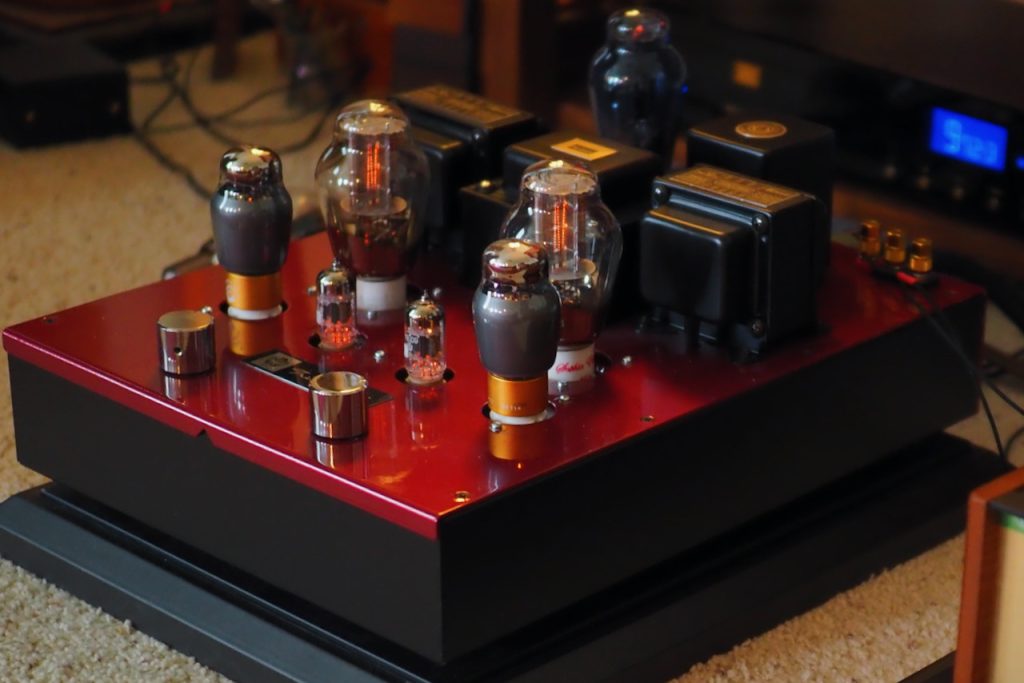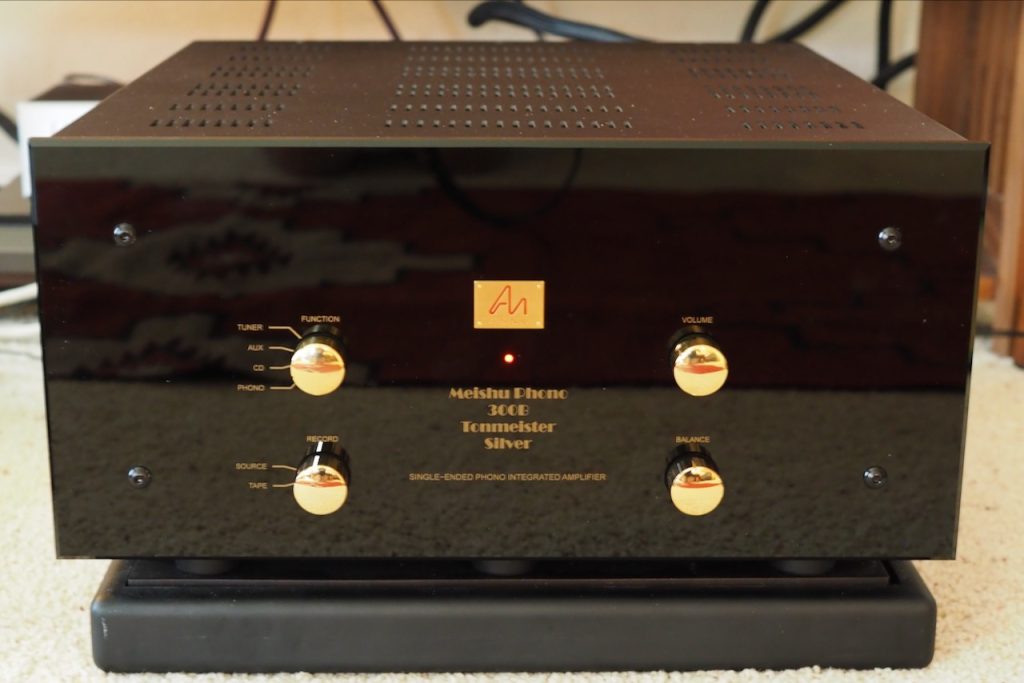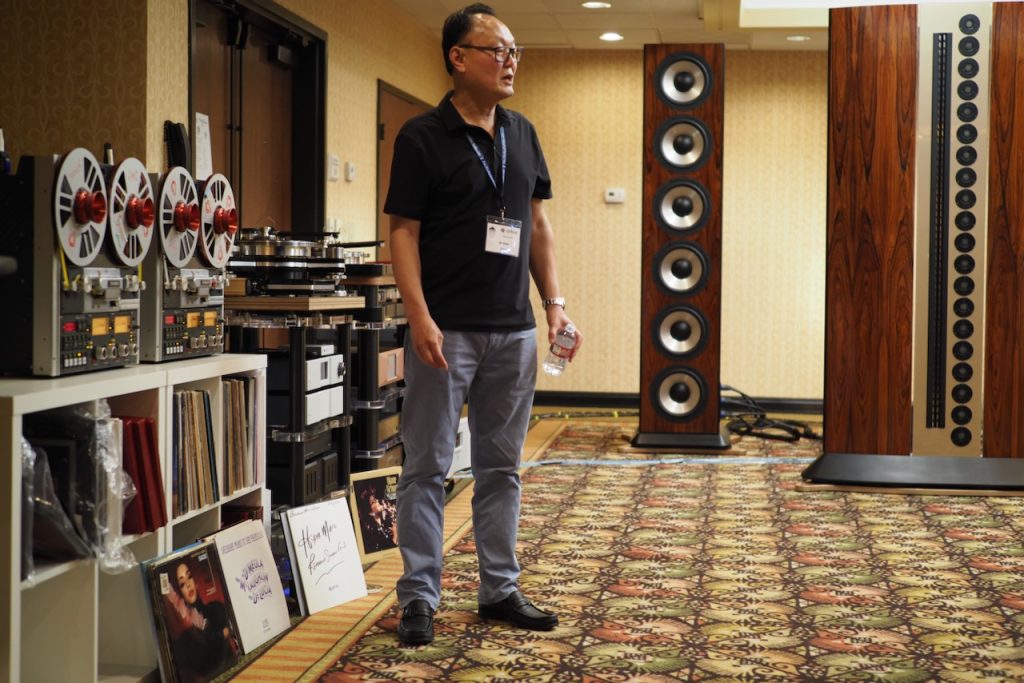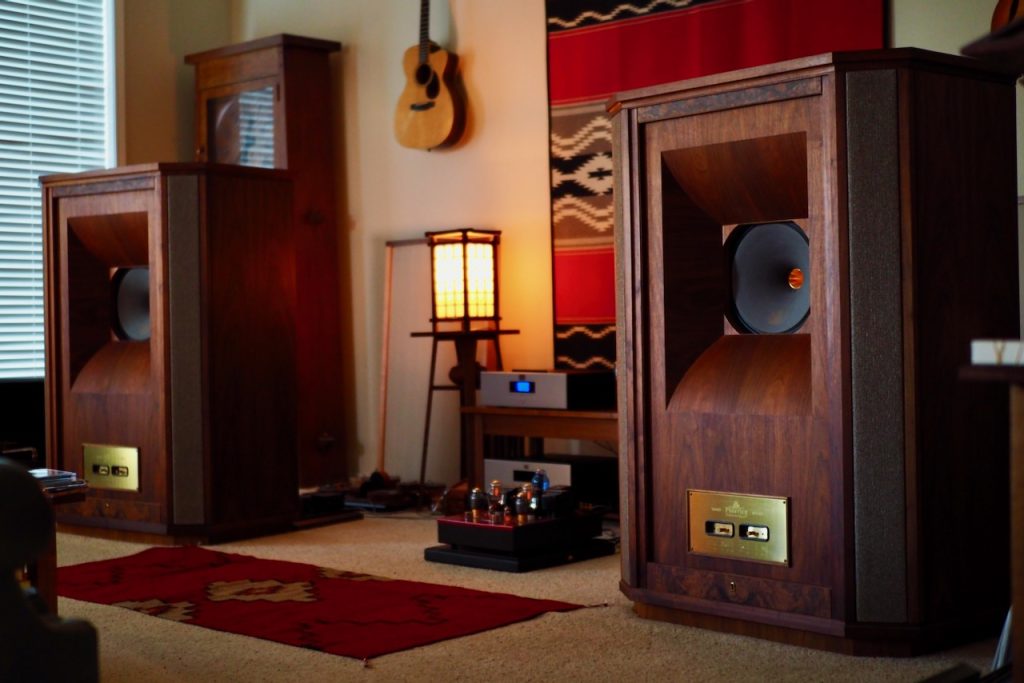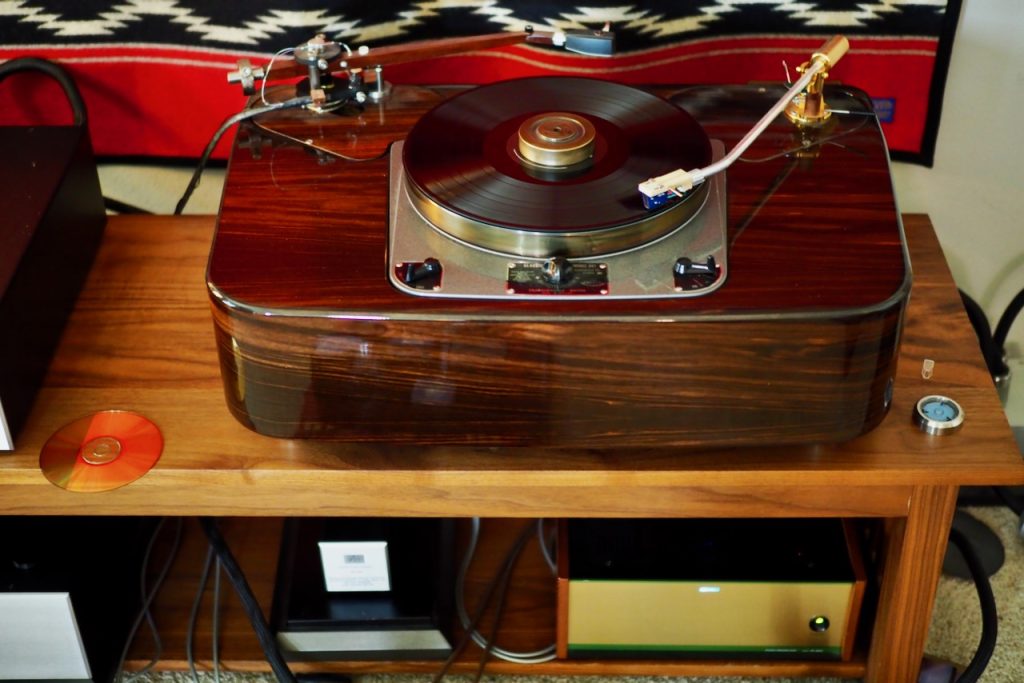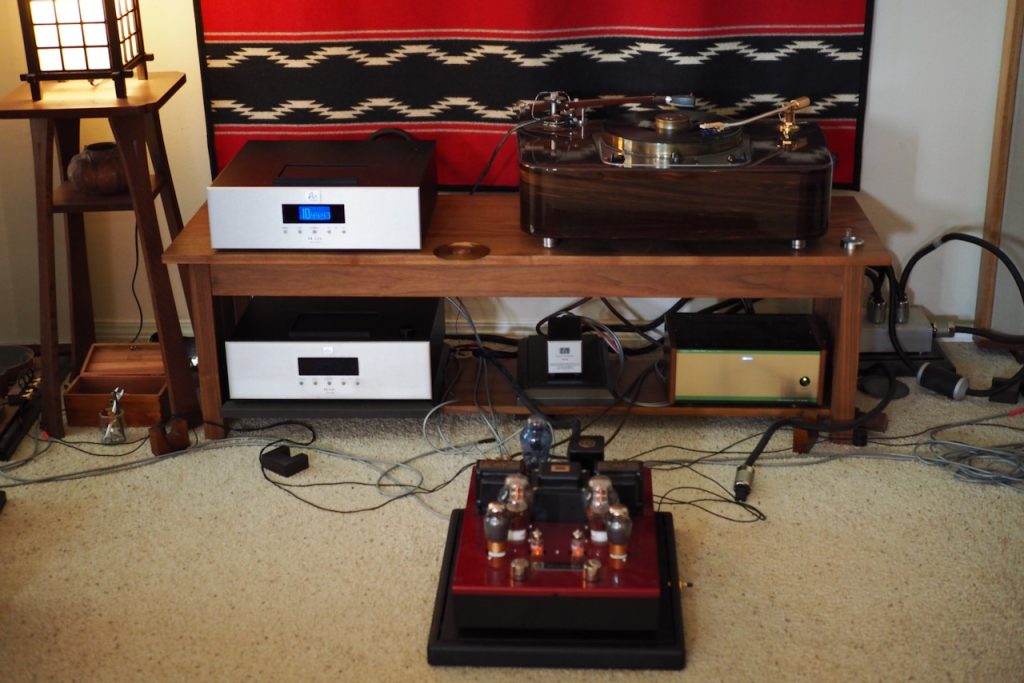I'm a huge fan of Duke Ellington's music. One of my Duke favorites is Ellington Indigos, which is one of those albums I just never seem to tire of listening to.
Ellington Indigos was originally released in 1958 as a mono LP (CL 1085), a stereo LP (CS 8053), and as a 7 1/2 ips reel-to-reel (GCB 18), on the Columbia records label.
In total there have been 56 releases of Ellington Indigos over the years on vinyl, R2R, CD, and cassette tape.
I was looking through my album collection this morning, as I thought I had a copy of the 1958 mono LP version, but I couldn't find it, but I did find the 2009 EU reissue LP on the Jazz Track record label.
I also have the 1989 Columbia records stereo CD reissue (44444), and I just bought a copy of the Limited Edition 24K Gold CD reissue (IMP8311) that was remastered by Impex Records in 2014.
The original mono LP had 9 tracks: Solitude, Where Or When, Mood Indigo, Autumn Leaves, The Sky Fell Down, Prelude To A Kiss, Willow Weep For Me, Tenderly, and Dancing In The Dark. The stereo version had 8 tracks, and omitted The Sky Fell Down.
The 2009 Jazz Track reissue stereo LP had 10 tracks: Solitude, Where Or When, Mood Indigo, Autumn Leaves, Night And Day, The Sky Fell Down, Prelude To A Kiss, Willow Weep For Me, Tenderly, and Dancing In The Dark. The Jazz Track reissue LP maintains the 9 track format of the original mono release (even though they are the stereo versions), and Night And Day is added as a bonus track.
The 1989 Columbia records stereo CD reissue (44444) has 10 tracks: Solitude, Where Or When, Mood Indigo, Night and Day, Prelude To A Kiss, All The Things You Are, Willow Weep For Me, Tenderly, Dancing In The Dark, and Autumn Leaves This version omitted The Sky Fell Down, and added All The Things You Are and Night And Day.
The Impex version was particularly interesting to me as it is a compilation that includes both stereo and mono tracks of select songs. The liner notes say that all of the tracks were mastered from original analog tapes, with tracks 1-8 stereo tracks mastered by Kevin Grey and Robert Pincus, and with the mono tracks 9-16 mastered by Mark Wilder.
Impex included 16 tracks: stereo versions of Solitude, Where Or When, Mood Indigo, Autumn Leaves, Prelude To A Kiss, Willow Weep For Me, Tenderly, and Dancing In The Dark, like the original 1958 stereo release. Mono versions of Night And Day, All The Things You Are, The Sky Fell Down, Mood Indigo (Alternate Take 1), Mood Indigo (Alternate Take 2), Willow Weep For Me (Alternate Take), Where Or When (Alternate Take), and Love (My Heart, My Mind, My Everything).
Impex's CD is a fun combination as you get a nice selection of both mono and stereo tracks, and the new addition of Love (My Heart, My Mind, My Everything).
Normally I don't buy multiple versions of the same album, but I really wanted to hear the Impex Records Gold CD of Ellington Indigos with its inclusion of both mono and stereo tracks, on the Audio Note (UK) CD 5.1x CD player that is in for review.
The CD 5.1x is called "CD player" by Audio Note (UK), but it is really more than that, being an integrated version of the Audio Note (UK) CDT Three transport & DAC 4.1x balanced vacuum tube DAC combination in one box, which is intended by Audio Note (UK) to make the CD 5.1x the highest performing CD player on Planet Earth (more HERE).
As you probably know, I am a huge fan of integrated amplifiers, like the Triode Lab 45 EVO integrated SET amplifier in the photo above, or the Audio Note (UK) Meishu Phono Silver Tonmeister 300B SET integrated amplifier in the photo below.
You get so much performance for your money from these integrated amplifiers it is staggering, although the caveat is you need highly sensitive loudspeakers to realize that performance, particularly so with the 2 watt 45 EVO.
I've been having a ball exploring music on CDs of late, and the CD 5.1x is the CD player equivalent of stellar performing integrated amplifiers, by integrating a top notch integrated vacuum tube DAC and transport into one chassis.
Peter Qvortrup's Audio Note (UK) Red Book CD players have challenged my perceptions of what a digital audio reality is like, with their analog-like presentation, superb musicality, and exemplary sound quality from Red Book CDs.
These Audio Note (UK) CD players have really changed my life as a music lover by opening up my ability to listen to the vast library of Planet Earth's great recorded musical performances from the acoustic era of recording (1877 to 1925), the electric era (1925 to 1945), the magnetic monaural era (1945 to 1957), the magnetic stereo era (1957 to 1975), and the digital era (1975 to present day), at a level of fidelity that would have been unimaginable just a decade ago.
Its really cool to be able to do that with only one high-fidelity source component.
Most enthusiasts have considered the pecking order of sound quality to be reel-to-reel master tapes on the top step of the podium (along with high resolution digital transfers of them), LPs on the second step of the podium, and Red Book CDs on a more distant third step of the podium.
R2R is great, but there are very limited albums selections available compared to vinyl, and particularly CDs. You also need specialized $$$ playback equipment to get the best out of them, and they cost about ten times per album what premium LPs (or CDs) sell for.
So for audio everyman (me), that means the two most viable formats that offer a wide variety of affordable music to listen to are LPs and CDs.
What I'm realizing after listening to the CD 2.1x/II, CD 4.1x, and now the CD 5.1x CD players, is that they have evolved to an extent that makes the distinction in quality between vinyl and CD a relatively moot point, and which one will sound better will likely be a function more of a given album rather than the format.
As I've said before:
"Is digital superior to analog? Yes and no. Is analog superior to digital? Yes and no."
"Classical music lovers - like the late and great J. Gordon Holt of Stereophile fame - might prefer CDs for their 90 dB dynamic range (vinyl is 55 to 70 dB), which means less dynamic compression (and the possibility for none), and their up to 80 minute playing time, which enables listening to a full concert uninterrupted (where vinyl is an interrupted 45 minutes over two sides)."
"There is also less surface noise from CDs than vinyl, and they don't wear after repeated playing like vinyl. A CD collection also takes up less space than a vinyl collection, so you can get a bigger music library into the same amount of space."
"Vinyl aficionados will point out that the frequency range of vinyl is potentially 7 Hz to 50KHz (but more likely the lower end is 20 to 30 Hz), and vinyl high-frequencies handily exceeds that of CD (CDs top out at 22.5KHz). That potentially delivers more openness, more spaciousness, and more soundstage depth, for vinyl."
"Recording engineers are saying that for recording purposes, the signal that goes from the microphone to the recorder, and the signal you get back from the recorder, is more accurate for digital than it is for analog."
"They also say today's best digital transfers from analog master tapes are indistinguishable from each other in sound quality. They also say that masters transferred to CDs are much closer to the original master recordings than those transferred to LPs, which will typically require more dynamic compression."
"Personally, I enjoy both digital and analog formats, and when each type of format is optimized during mastering specifically for a CD, or a vinyl record, you can bring the strengths of each type of media to the software, and the end result is that they are both very, very, high-fidelity, but perhaps just in slightly different ways."
System Context: My Tannoy Westminster Royal SE loudspeakers based system is setup in audiophile-style fashion with the speakers well out into the room to maximize soundstage and holographic imaging aspects of the recording arts (i.e. the visuospatial aspects of recordings), while maintaining natural tonality and musicality.
Amplification was provided by the Triode Lab 45 EVO integrated SET amplifier. The sources used were the Audio Note (UK) CD 5.1x CD player on the digital front, and the Io I MC cartridge mounted on my CTC Garrard 301's Schick tonearm, stepped up with the silver AN-S4 SUT, and utilizing the Leben RS-30EQ phono preamp, on the vinyl front.
Cables: Acoustic Revive power cables, Audio Note (UK) AN-V interconnects for the CD 5.1x and AN-S4 SUT, Belden 8402 interconnects for the Leben RS-30EQ, and Duelund DCA16GA speaker cables.
I thought I'd listen to the Impex Gold CD and Columbia CD of Ellington Indigos first on the CD 5.1x.
Impex did a nice job on their Gold CD of Ellington Indigos. The CD 5.1x looks remarkably deep into the recordings, and easily distinguishes the different hands that mastered the stereo and monaural tracks.
On "Mood Indigo" I preferred the monaural tracks to the stereo track. This is not an apples to apples comparison, as all three versions of "Mood Indigo" are different takes, that were mastered by different people.
The nice thing about the CD 5.1x was that I could easily hear the monaural recordings were different from each other, and the mastering on the stereo and monaural sounded different as well. That's not good or bad as far as the different recordings go, but I liked hearing deep enough into the recordings that I could easily hear the differences.
The "Mood Indigo" monaural alternate take 1 recording sounded more natural to me, more refined, and more musical than the other two versions included. Interestingly, the alternate take 1 monaural recording had a marginally wider soundstage than the alternate take 2 monaural version and the stereo version. The stereo version had more defined and localized imaging than the alternate take 1 mono version, but was about the same as the alternate take 2 mono version.
Just as an aside, when listening to CDs across the recording eras, the rule seems to mostly follow "older is better" when discussing the ability of the format to relay the emotional content of the recording to the listener.
My take on it is that recordings from the acoustic era > electric era > monaural magnetic era > stereo magnetic era > digital era, when it comes to relaying the emotional impact content of a recording.
From an overall sound quality perspective my take on it is the order is generally stereo magnetic era > mono magnetic era > digital era ≥ electric era > acoustic era.
On the Impex Gold CD of Ellington Indigos with stereo and monaural examples of "Mood Indigo" the above was the case in terms of relaying the emotive content of the music.
The stereo version of "Willow Weep For Me" is done in audiophile fashion, with very distinct imaging positions, and obvious layering back into the soundstage. The monaural version of "Willow Weep For Me" sounded recessed in terms of sound quality compared to the stereo version, but musically sounded more like you would hear in a live performance compared to the stereo version.
So no absolutes to report here, but the CD 5.1x provided a very deep glimpse into the differences in recordings on Impex's Ellington Indigos, while delivering the music in a very satisfying and engaging way.
The Columbia stereo CD of Ellington Indigos sounded very musical through the CD 5.1x, and in some ways was more musically engaging than the Impex CD. For example, the opening track of "Solitude" was bolder and more dramatic on the Columbia CD, where the Impex sounded more withdrawn, less dynamic, albeit more refined sounding.
So between these two CDs, the CD 5.1x really highlighted the differences in the mastering approach over the frequency bands of the recordings (sub-bass 20 to 60 Hz, bass 60 to 250 Hz, low midrange 250 to 500 Hz, midrange 500 Hz to 2 kHz, upper midrange 2 to 4 kHz, presence 4 kHz to 6 kHz, and brilliance 6 kHz to 20 kHz), and the overall recording level on the CDs (the Columbia version is louder at the same volume setting).
It seems that the Impex CD has more of a classic audiophile brilliance range (6 kHz to 20 kHz) boost that makes a recording sound more "hi-fi", than does the Columbia CD, and ditto for the presence range (4 kHz to 6 kHz), which offers more clarity and definition on the Impex CD, but is otherwise less satisfying musically overall than the Columbia version.
While the Impex CD is great for having the monaural tracks to listen and compare to, overall I enjoyed the presentation of the Columbia CD version more, which had a more full bodied and dynamic presentation. As a bonus, the Columbia CD is about a third of the price of the Impex CD.
Next in my non apples to apples comparison of Ellington Indigos, I listened to the Jazz Track stereo LP of Ellington Indigos on my turntable with the Audio Note (UK) I0 I MC phono cartridge and silver AN-S4 SUT combination.
Compared to the Impex CD, I thought the Jazz Track stereo LP sounded better by being still more refined, and generally more musical overall. There's a few ticks and pops on the LP that you don't hear on the Impex CD, but overall I preferred the vinyl.
The surprise came when comparing the LP to the Columbia CD. Overall, the Columbia CD played on the CD 5.1x was more musically engaging than the Jazz Track LP played through the Io I / AN-S4 SUT combination. However, the LP had a more refined and liquid sound quality through the Io I cartridge / AN-S4 SUT than did the CD, but that was not enough for it to best the Columbia CD overall when played through the CD 5.1x.
Ok, now let me step back a little to frame the Impex CD, the Columbia CD, and the Jazz Track LP in a larger perspective.
The overall voicing of the CD 5.1x is cut from the same cloth as that of the Io I / AN-S4 SUT combination.
The CDs through the CD 5.1x, and the LP through the Io I cartridge / AN-S4 combination, were all superb, musically satisfying, and terrific sounding, as you would expect from great music and an audio system at this level of performance.
What I found to be impressive, and a little surprising, was that the CD 5.1x playing the Columbia CD was on relatively equal performance footing to the Io I cartridge & AN-S4 SUT combination playing the Jazz Tracks LP, and while the two sources sounded somewhat different from each other in a couple of ways as described above, it was a relatively even sort of overall matchup.
To put that in further perspective, for my tastes, the Io I MC cartridge & AN-S4 SUT combination are by far the highest performing I've heard in this system for playing LPs, and they are indeed at a lofty level of overall performance.
That also implies that the CD 5.1x playing CDs is at a similarly lofty level of performance, which is sort of mind blowing.
Again, this isn't an apples to apples comparison of the Impex CD, the Columbia CD, and the Jazz Track LP, as they all used different source tapes, alternate tracks, and had significant differences in the mastering approach, but the fact that the CD 5.1x playing CDs could perform at a similar level as my vinyl front end with the Io I MC cartridge & AN-S4 SUT playing LPs, impressed the heck out of me.
I actually expected the performance order to be the Io I MC cart & AN-S4 SUT playing the LP > the CD 5.1x playing the Impex CD > CD 5.1x playing the Columbia CD, so the outcome was a little unexpected.
But that's why we listen instead of just speculate on outcomes, and the CD 5.1x's analog-like presentation, superb musicality, and exemplary sound quality from the Impex and Columbia Red Book CDs, puts it on relatively equal performance footing to the Io I MC cart & AN-S4 SUT playing the Jazz Track LP.
More to come on the CD 5.1x, with more CD and vinyl comparisons. I'm still waiting for the silver AN-V interconnects for the CD 5.1x and CD 4.1x to get fully run-in, and they are getting there, but still have a ways to go to reach the 200 hour mark.
As always, thanks for stopping by, and may the tone be with you!




